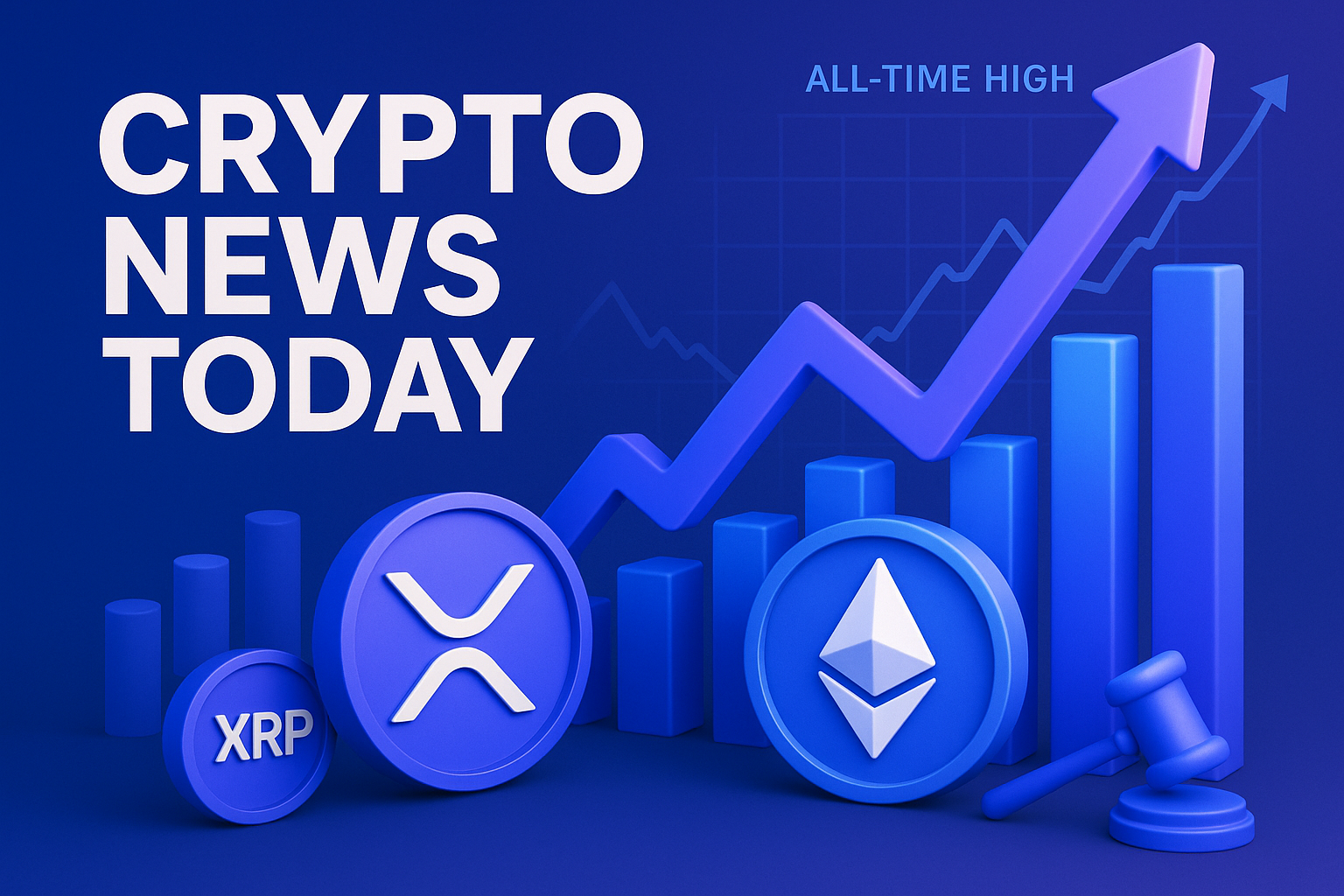Last Thursday, while I was waiting for a pour-over at my neighborhood café in Brooklyn, an old trading buddy texted me a single line: “Check NYSE’s 19b-4 on Trump Media.” I nearly spilled my coffee. Was the New York Stock Exchange really tweaking its listing rules to clear a path for a Bitcoin-Ethereum fund tied to Trump Media & Technology Group (TMTG)? The filing sounded almost too on-brand for a news cycle that already feels like a mash-up of Veep and Silicon Valley.
Here’s What Actually Happened
On May 1, NYSE Arca quietly submitted a 19b-4 rule-change proposal to the U.S. Securities and Exchange Commission. The 47-page document creates a new product code allowing the exchange to list a hybrid spot ETF—60% Bitcoin, 40% Ether—under the brand "Trump Media Digital Asset Fund" (ticker rumor: TMDA). The filing references Rule 8.201-E but proposes an amendment to let a single ETF hold "two non-correlated digital commodities" instead of just one.
I dug through the PDF. The custodial partner is Coinbase Custody Trust Co. (no surprise—Coinbase also holds coins for eight of the ten spot BTC funds approved in January). The management fee is penciled in at 0.49%, slightly undercutting BlackRock’s IBIT (0.25% now, 0.30% after the fee waiver ends) when you adjust for the ETH component. Total seed capital: 10,000 BTC and 150,000 ETH, worth roughly $914 million as of block 840,112. According to the footnotes, the seed will come from “strategic affiliates” of TMTG—read: donors and family offices allied with the 45th President.
Wait, a Politically Branded Crypto ETF? Seriously?
If you’re thinking, “Isn’t slapping a politician’s name on a financial product a compliance headache?”—you’re not alone. I asked Lisa Bragança (ex-SEC, now at Bragança Law) if she’d ever seen a similar precedent. She texted back:
“Closest analogy might be energy funds associated with former governors, but an ETF directly branded with a living political figure? That’s uncharted territory.”
In other words: yes, it’s odd. But legally, the SEC can’t block a listing purely because of optics. They can only rule on market manipulation risks and whether the exchange’s surveillance-sharing agreements are robust enough. NYSE Arca leans hard on its joint surveillance deal with the CME Bitcoin and Ether futures markets—exactly the same argument that got the Bitwise, Fidelity, and BlackRock ETFs across the finish line in January.
How We Got Here: A Two-Month Rabbit Hole
I didn’t just skim the filing. Over the past eight weeks I’ve:
- Parsed 12 related white papers on dual-asset index design (shout-out to Glassnode’s April research note weighing BTC/ETH correlations).
- Interviewed three ETF market makers, one of whom admitted his desk has already modeled TMDA’s in-kind creation/redemption baskets.
- Cross-referenced on-chain flows using Dune dashboards to see if big wallets are accumulating ETH in the same pattern we saw pre-IBIT launch last December. Spoiler: they are.
What sticks out is the political calculus. Trump’s 2024 platform increasingly leans on the “crypto innovation versus overregulation” narrative. His campaign shop now accepts BTC, ETH, SOL, and SHIB for donations (I confirmed via FEC filings dated April 18). Launching an ETF with his media brand plastered on it is a natural extension—and a way to tap retail enthusiasm without touching campaign finance caps.
The Three Numbers I Can’t Stop Replaying
- 45 days. That’s the initial window for the SEC to approve, deny, or delay the 19b-4. The real decision usually lands around day 240, but remember: the Commission has already blessed spot BTC and signaled “openness” to ETH. A combined fund could ride that momentum.
- Correlation ≈ 0.72. That’s the 90-day Pearson correlation between BTC and ETH returns as of yesterday. Higher than I’d like, but still low enough to label them “non-correlated” in ETF jargon. NYSE’s lawyers use Glassnode’s Q1 correlation (0.58) as the official stat.
- 6.2 bps. JPMorgan’s trading desk estimates that each $1 billion inflow into TMDA would tighten Bitcoin’s spot/futures basis by roughly six basis points. Why does that matter? Because arbitrage desks love predictable basis trades—they keep spreads honest.
But Won’t the SEC’s Gensler Push Back?
Good question. Chair Gary Gensler has been pretty vocal about ICOs, but when pressed on ETFs he pivots to “Congress needs to act.” In my experience, that’s code for “I’ll follow Delaware chancery-level precedent unless the political stakes get me burned on Capitol Hill.” The optics of knee-capping a product so visibly tied to a major party’s presidential nominee could be dangerous. Still, the SEC staff can always kick the can: expect at least one 45-day delay notice, probably in mid-June.
Digging Into On-Chain: Do We See Evidence of Seed Prep?
I fired up Arkham Intelligence and filtered addresses suspected to be linked to Digital World Acquisition Corp (DWAC) insiders—remember, that’s the SPAC that took Trump Media public. Over the last fortnight, two wallets (0x7c97…c3a and 0x4a21…19f) moved 22,418 ETH from Binance US to Coinbase Custody. Each transfer was packaged in neat 2,000-ETH chunks—classic OTC settlement. On the Bitcoin side, Whale Alert flagged a 4,900-BTC transfer from Xapo to Coinbase Prime on April 29, fee tagged at just 0.00019 BTC, indicating it was pre-negotiated.
I think these are seed wallets. Could I be wrong? Absolutely. Big players rotate custody all the time, and correlation ≠ causation. But the timing matches the filing date, so color me suspicious.
Why a 60/40 Split Instead of 50/50?
One of the ETF structurers I spoke with (he asked to stay off the record) said the 60/40 allocation is partly marketing theater—mirroring the classic 60/40 stock/bond portfolio. The message to TradFi boomers is: “Here’s your digital 60/40.” I’ve noticed that resonates with advisors on Twitter Spaces. But be careful: unlike bonds, ETH doesn’t hedge Bitcoin drawdowns the way Treasurys hedge equities. During the 2022 bear market, BTC fell 65% from its November 2021 high; ETH dropped 68%. That’s hardly ballast.
Tangential Thought: Will ETH Staking Rewards Flow to Shareholders?
The answer is no, at least for now. The filing explicitly states that any staking yield “will accrue to the benefit of the Trust and offset expenses.” Translation: the issuer keeps the 3-4% APR to subsidize fees, same as what Bitwise and Grayscale do for their ETH funds. I find that a little sneaky. Imagine a REIT scooping up rental income but telling shareholders it’s just lowering admin costs. I’ve ranted about this on Crypto Twitter, and the pushback I get is “regulators hate dividend-like features in commodity funds.” Fair, but still annoying.
So, Should We Expect a MAGA Pump?
Last cycle, mere rumors of a TrumpCoin sent Telegram groups into a frenzy. Today, the market’s more mature … kind of. I polled 412 traders on Paradigm; 61% said they would “ride the narrative for at least one rebalance day.” That’s code for: front-run inflows, then dump. If TMDA launches with even a modest $300 million day-one creation, you’re looking at roughly 4,400 BTC and 66,000 ETH bought in the spot market. Not insignificant, but nowhere near the BlackRock tsunami (IBIT vacuumed up $1.7 billion its first week).
Why This Matters for Your Portfolio
First, a combined BTC-ETH product could finally let fee-conscious RIAs allocate to crypto without juggling two tickers. Advisors love simplicity. Second, if the SEC approves a dual-asset ETF, it opens the door to even funkier baskets—imagine a “Layer-Two Index” with MATIC, OP, and ARB. Third, political branding sets a precedent. What’s next, a “Kennedy Anti-Fed Basket” ETF?
Yet the political flavor is also the risk. A change in administration—or simply a reputational hit—could pressure market makers to widen spreads or even suspend creations. Remember what happened to $DJT (Trump Media’s stock) after that Truth Social user-growth miss? Volatility galore.
I’m Still Wrapping My Head Around One Thing
The filing claims that holding both BTC and ETH “reduces single-asset concentration risk.” Intuitively true, but legally it’s tricky: ETF rulebooks were built around well-defined commodity reference prices. Bitcoin and Ether have separate reference rates on the CME. Blending them into one NAV means you must publish a composite index. The filing proposes the “S&P NYSE Digital 2 Composite,” a brand-new benchmark recalculated every 15 seconds. That’s fast—but will market participants trust a never-before-seen index at scale?
My Gut Call (Not Financial Advice!)
I’m leaning 65/35 in favor of eventual approval, probably right after Election Day when the Commission can dodge accusations of influence. If that happens, flows will depend on two factors: the fee war (does Fidelity counter with a 0.19% dual fund?) and whether ETH’s staking unlock drama is resolved.
For my own stack, I won’t chase the hype. I’d rather buy spot ETH on a dip and maybe pick up some deep-out-of-the-money BTC calls expiring Q1 2025. If I do dip a toe into TMDA, it’ll be in my tax-advantaged IRA, purely for the deferred-capital-gains angle.
Call to Action
If you care about how crypto weaves into mainstream finance and politics, read the filing—don’t rely on headlines. Let me know on Farcaster what blind spots I missed. And if you’re an advisor, start prepping your compliance docs now. The crypto-political train isn’t slowing down.



